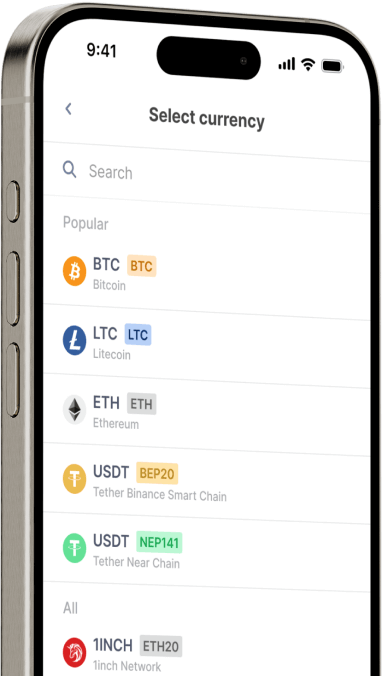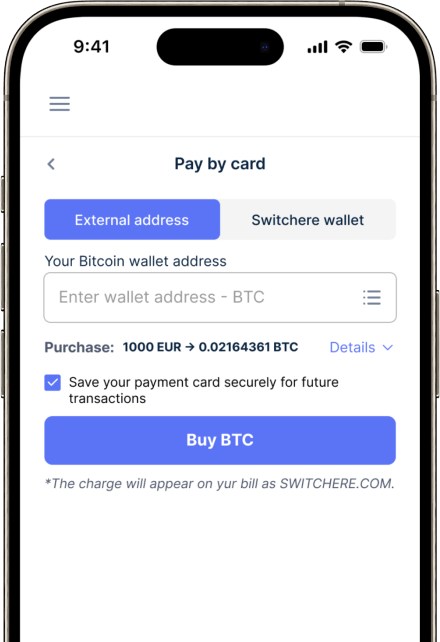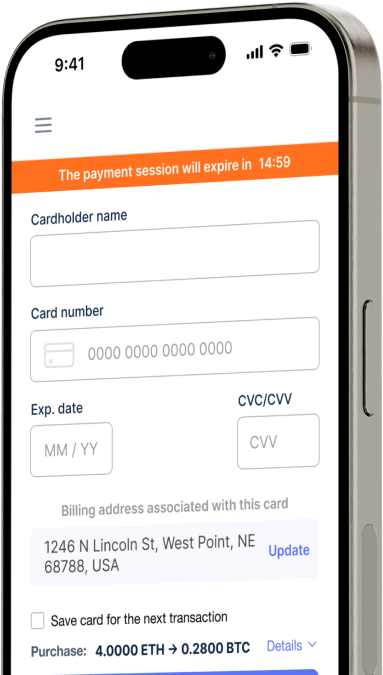Convert
Georgian Lari (GEL) to Conflux EVM (CFX) Instantly
Purchase Conflux EVM (CFX) with Georgian Lari (GEL) easily at Switchere and benefit from fast, secure transactions.
About
Conflux EVM (CFX)
Conflux (CFX) is a high-performance Layer 1 blockchain designed to overcome the blockchain trilemma of achieving scalability, security, and decentralization simultaneously. It operates as a permissionless, public blockchain infrastructure engineered for building high-throughput decentralized applications (dApps), particularly in DeFi, Web3, and the metaverse. Its core innovation is the unique Tree-Graph consensus algorithm, a novel ledger structure that processes blocks in parallel rather than in a linear chain. This parallel processing capability allows for significantly higher transaction throughput and lower confirmation times compared to traditional blockchain architectures, providing a robust foundation for scalable digital assets and applications.
The network is secured by a hybrid Proof-of-Work (PoW) and Proof-of-Stake (PoS) consensus mechanism, combining the proven security of PoW with the energy efficiency and governance benefits of PoS. A key feature is its full EVM compatibility, creating a seamless environment for developers to migrate Ethereum-based smart contracts and dApps. The native utility token, CFX, is integral to the ecosystem. It is used for paying transaction gas fees, participating in network governance through on-chain voting, and for staking to earn rewards, which contributes to the cryptographic security of the entire decentralized network.
Buy Other 150+ Cryptocurrencies for Georgian Lari (GEL)
Other Coins for Georgian Lari (GEL)
-
GEL to ZRX
-
GEL to 1INCH
-
GEL to AAVE
-
GEL to ACH
-
GEL to ALGO
-
GEL to TLM
-
GEL to ANKR
-
GEL to APE
-
GEL to NFT
-
GEL to API3
-
GEL to APT
-
GEL to ARPA
-
GEL to AUDIO
-
GEL to AVAX
-
GEL to AVAX
-
GEL to AXS
-
GEL to BADGER
-
GEL to BAL
-
GEL to BNT
-
GEL to BAT
-
GEL to BNB
-
GEL to BSW
-
GEL to BSV
-
GEL to BLUR
-
GEL to BONE
-
GEL to CTSI
-
GEL to CELR
-
GEL to CELO
-
GEL to CEL
-
GEL to LINK
-
GEL to CHZ
-
GEL to CHR
-
GEL to C98
-
GEL to COMP
-
GEL to CFX
-
GEL to PEOPLE
-
GEL to CVX
-
GEL to ATOM
-
GEL to CTC
-
GEL to CRV
-
GEL to DAI
-
GEL to DASH
-
GEL to MANA
-
GEL to DENT
-
GEL to DGB
-
GEL to DYDX
-
GEL to XEC
-
GEL to EOS
-
GEL to ETC
-
GEL to ENS
-
GEL to ETHW
-
GEL to FET
-
GEL to FIL
-
GEL to FLOKI
-
GEL to GALA
-
GEL to GNO
-
GEL to ONE
-
GEL to HBAR
-
GEL to HOT
-
GEL to HOOK
-
GEL to ICX
-
GEL to ILV
-
GEL to IMX
-
GEL to INJ
-
GEL to ICP
-
GEL to IOST
-
GEL to IOTX
-
GEL to JASMY
-
GEL to JST
-
GEL to KAVA
-
GEL to KCS
-
GEL to KSM
-
GEL to KNC
-
GEL to LDO
-
GEL to LQTY
-
GEL to LPT
-
GEL to LOOKS
-
GEL to LRC
-
GEL to LUNA
-
GEL to MKR
-
GEL to MASK
-
GEL to EGLD
-
GEL to ALICE
-
GEL to NEAR
-
GEL to XEM
-
GEL to NEXO
-
GEL to NOT
-
GEL to NMR
-
GEL to OKB
-
GEL to OMG
-
GEL to ONT
-
GEL to EDU
-
GEL to OP
-
GEL to OGN
-
GEL to CAKE
-
GEL to PAXG
-
GEL to PENDLE
-
GEL to DOT
-
GEL to POL
-
GEL to QTUM
-
GEL to QNT
-
GEL to RDNT
-
GEL to XRD
-
GEL to RVN
-
GEL to REN
-
GEL to RSR
-
GEL to RLC
-
GEL to RPL
-
GEL to SFP
-
GEL to SHIB
-
GEL to SKL
-
GEL to SXP
-
GEL to STND
-
GEL to STG
-
GEL to XLM
-
GEL to GMT
-
GEL to STORJ
-
GEL to STMX
-
GEL to SUSHI
-
GEL to SNX
-
GEL to USDT (Polygon)
-
GEL to USDT (AVAC)
-
GEL to USDT (BEP20)
-
GEL to USDT (ERC20)
-
GEL to USDT (SPL)
-
GEL to USDT (NEP141)
-
GEL to USDT (FA2)
-
GEL to USDT (TRC20)
-
GEL to USDT (JETTON)
-
GEL to XTZ
-
GEL to GRT
-
GEL to SAND
-
GEL to TFUEL
-
GEL to THETA
-
GEL to RUNE
-
GEL to TON
-
GEL to TUSD (BEP20)
-
GEL to TUSD (TRC20)
-
GEL to TWT
-
GEL to UOS
-
GEL to UMA
-
GEL to UNI
-
GEL to USDC (Polygon)
-
GEL to USDC (SPL)
-
GEL to USDC (OP)
-
GEL to USDC (BEP20)
-
GEL to USDC (AVAC)
-
GEL to USDC (ARB)
-
GEL to USDC (ERC20)
-
GEL to VET
-
GEL to VRA
-
GEL to WAXP
-
GEL to WOO
-
GEL to WLD
-
GEL to WBTC
-
GEL to WMINIMA
-
GEL to XDC
-
GEL to YFI
-
GEL to YGG
-
GEL to ZIL
How to Buy Conflux EVM (CFX)
Frequently Asked Questions
-
What is the most direct way to buy Conflux (CFX) using Georgian Lari (GEL)?
The most direct method is to find a cryptocurrency exchange or a fiat on-ramp service that specifically lists a GEL/CFX trading pair. This involves creating an account, completing KYC/AML compliance, and depositing GEL via a supported local payment method, such as a Georgian bank transfer. This allows you to purchase the CFX digital asset directly without intermediate currency conversions, which can reduce fees.
-
After buying CFX with GEL, how can I securely store my tokens?
For optimal security, you should transfer your CFX from the exchange to a non-custodial digital wallet where you control the private keys. Options include the official Conflux Fluent Wallet, or hardware wallets like Ledger or Trezor which offer cold storage. Leaving large amounts of any digital asset on an exchange exposes you to risks like exchange hacks. Always back up your seed phrase securely.
-
Are there typical fees associated with a GEL to CFX blockchain transaction?
Yes, several fees can apply. First, the exchange may charge a deposit fee for your GEL transfer. Second, there will be a trading fee (either a maker or taker fee) when you execute the trade on the GEL/CFX order book. Finally, when you withdraw your CFX to a private digital wallet, the exchange will charge a network withdrawal fee. This fee covers the blockchain transaction cost on the Conflux network, which is typically very low due to its efficient design.
-
What are the technical advantages of the Conflux network that I gain access to when buying CFX?
When you acquire CFX, you gain access to a high-throughput blockchain network featuring a unique Tree-Graph ledger structure and a hybrid PoW+PoS consensus mechanism called GHAST. This architecture enables parallel processing of transactions, leading to higher TPS and lower fees. Additionally, its EVM-compatible 'eSpace' allows for easy migration of Ethereum dApps, and its 'Gas Sponsorship' feature enables developers to pay transaction fees for their users, improving user experience.
-
What does EVM compatibility on Conflux's eSpace mean for my CFX holdings?
EVM (Ethereum Virtual Machine) compatibility means that Conflux's eSpace can execute smart contracts written for Ethereum. For a CFX holder, this is significant because it opens up access to a vast ecosystem of decentralized applications (dApps), including DeFi protocols, NFTs, and games, that are ported from or built for Ethereum. It allows your CFX assets to interact with a broader range of blockchain services and smart contract logic, enhancing their utility.
-
Can I use ConfluxScan to track my GEL to CFX purchase transaction?
You can use ConfluxScan, the official blockchain explorer for Conflux, to track the on-chain portion of your transaction. Specifically, once the exchange processes your CFX withdrawal to your personal wallet, a transaction ID (TxID) will be generated. You can enter this TxID into ConfluxScan to see block confirmations, the amount transferred, and the sending/receiving addresses on the Conflux ledger. The initial GEL deposit, however, occurs within the exchange's internal system and is not visible on-chain.




